|
Most of us take breathing for granted until we or someone we know begins to suffer from COPD, asthma or another debilitating lung disease. In addition to long term breathing problems, many of these diseases can lead to a lung transplant. Maintaining good lung health is especially important during the COVID-19 pandemic. This virus attacks the lungs and causes severe breathing problems even after your recover from it. Here are some activities that you can do to strengthen your lungs and decrease your chances of needing a transplant in the future. These activities are listed according to fitness level. If you aren’t particularly athletic, start with the beginner level activities. If you are an athletic person, try them all! Beginner Fitness Level (Recommended for any age group): 1. Laughter Yoga- Laughter yoga combines breathing practices from traditional yoga with deep belly laughter. Deep belly laughter forces your lungs to expand more than they normally would and replaces the carbon dioxide that sits at the bottom of your lungs with oxygen. In between the laughter exercises, laughter yoga also incorporates deep breathing exercises causing you to take fewer, more effective, breaths overall. 2. Yoga- Yoga is founded upon breathing practices. In yoga, you consciously take long, deep breaths while practicing different poses and/or meditating. The long inhales and even longer exhales force the carbon dioxide that sits at the bottom of your lungs out and makes room for more oxygen. These exercises also help you slow down your breathing so you take fewer, more effective, breaths. Intermediate Fitness Level (Recommended for any age group): 3. Biking- Biking is a cardiovascular exercise that forces you to use your lungs to their maximum capacity for an extended period of time which strengthens them. Advanced Fitness Level (Recommended age group: teens-50s): 4. Long Distance Running- Similar to biking, long distance running forces you to use your lungs to their maximum capacity for an extended period of time. This helps you get rid of all the carbon dioxide that sits at the bottom of your lungs and makes room for more oxygen. More oxygen in your lungs means more oxygen in your blood which results in better overall health. 5. High Intensity Cardio -HIIT (High Intensity Interval Training), sprints, and jump rope are examples of high intensity cardio. They include a regimen of short bursts of anaerobic exercises which leave you out of breath. They are an intense cardiovascular activity that force you to use your lungs to their maximum capacity. The more you use your lungs to their full capacity, the healthier they will be.
If you struggle with your lung capacity, try starting with beginner level exercises like laughter yoga and slowly advancing to the more difficult ones like biking around town or in nature.
0 Comments
COPD and Asthma? What's the difference. How do I know I have COPD or Asthma? In this blog post we will compare and contrast COPD and Asthma so you have a better understanding of which is which.
COPD is a chronic lung ailment due to which the patient will feel difficulty to breathe since the lung airflow is affected. The symptoms of COPD are shortness of breath, coughing and clearing throat. COPD is irreversible and the causes of COPD are smoking and continued exposure to dust, harmful gases, chemicals and other air pollutants. Asthma is a respiratory condition marked by spasms of bronchi. Due to the inflammation the airways in the lungs become narrow. Asthma leads to breathing difficulty as a result of an allergic reaction. Asthma will cause shortness of breath, wheezing and chest tightness. Asthma can be reversed by taking medical treatment and the patient can be back to normal breathing. Various substances can trigger asthma attacks. Similar signs and symptoms When we consider COPD Vs Asthma it is to be noted that there are a few common signs and symptoms – cough, shortness of breath, chest tightness, anxiety, wheezing and intolerance. JOIN 200+ DONORS WHO'VE DONATED OVER $40,000 TO HELP LUNG TRANSPLANT PATIENTS. DONATE WHAT YOU THINK IS FAIR. MOST PEOPLE DONATE AT LEAST $10Different signs and symptoms In case of COPD, the breathing never returns to normal whereas in case of asthma the breathing returns to normal between attacks. COPD symptoms become more severe gradually whereas in the case of asthma the symptoms may or may not become severe. When compared to asthma, COPD will produce more mucus and phlegm. COPD will cause chronic cough and chronic blueness of lips and fingernail beds. This will not happen in the case of asthma. A person of any age can be affected by asthma whereas COPD normally occurs in those who are above 40 years. Causes: COPD Vs Asthma COPD is caused either by cigarette smoking or lung irritants including toxic fumes, chemicals and dust that cause damage of lung cells. Both cigarette smoke and tobacco-smoke cause COPD. Inherited genetic factors such as alpha- 1 antitrypsin deficiency also cause COPD. The main cause of asthma is the immune reactions to asthma triggers that take place in the airways causing inflammation. Asthma gets triggered by cigarette smoking also. However, asthma triggers differ from patient to patient. The most common asthma triggers are airborne substances such as pollen, mites, dust, mold, pet dander and various other substances. Treatment: COPD Vs Asthma The use of combined bronchodialators is the most widely accepted treatment for COPD. COPD patients can take vaccinations to reduce the risk of respiratory-track infections. Those who smoke are asked to get rid of the habit completely. Oxygen therapy can improve the survival of COPD patients. In the case of asthma, the doctor will discuss with the patient and will recommend the best treatment and the most suitable drugs. Medications include corticosteroids and short acting beta agonists. When exacerbations become severe, anticholinergic medications will be provided. In case the patient is desensitized to certain asthma triggers allergy shots will be prescribed by the doctor. Emergency treatment for both COPD and Asthma involves intravenous corticosteroids, incubation, mechanical ventilation and oxygen treatment. Prognosis and life expectancy: COPD Vs Asthma In case of COPD prognosis will be from fair to poor and depends on how fast the disease advances over time. Generally, lifespan of COPD patients decreases. Prognosis for asthma is from fair to excellent. It depends on how well the patient identifies his/her triggers and his/her response to the medication. Conclusion According to WHO estimates, 65 million people have moderate to severe chronic obstructive pulmonary disease (COPD). More than 3 million people died of COPD in 2005, which corresponds to 5% of all deaths globally. Severe COPD can get to a point where your lungs may stop functioning and you may need a lung transplant. Did you know that lung transplants have the lowest survival rate among all transplants? Only about 50% of people live 5 years after having a lung transplant and patients have to take up to 50 pills a day! We at The Sid Foundation want to increase that survival rate and help patients be able to afford that medication which is why we raise money for lung transplant research and development and lung transplant patients. We need your help in increasing the survival rate and helping lung transplant patients so please join the 200+ donors who have raised over $40,000 and donate what you think is fair to help lung patients everywhere. If you donate $10 or more, we will send you a free Lung Girl comic book and put your name on our wall of donors so that you can be recognized for your contribution forever.
Chronic obstructive pulmonary disease (COPD) is an inflammatory lung ailment which will cause obstruction of airflow to and from the lungs. Apart from cigarette smoking, other causes for COPD include prolonged exposure to harmful gases, dust, chemicals or other air pollutants. Those who are affected by COPD are more vulnerable to lung cancer and cardiac ailments. The two most common lung ailments - chronic bronchitis and emphysema - can lead to COPD.
Daily cough and production of sputum are the signs of chronic bronchitis. Air passes through the bronchial tubes to and from the air sacs of the lungs which are also known as alveoli. Inflammation of the lining of the bronchial tubes is called chronic bronchitis. Alveoli are the smallest air passages of the lungs and when the alveoli are destroyed as a result of cigarette smoking or exposure to irritant gases or air pollutants, the condition is called emphysema. COPD can be treated and if detected earlier, treated properly and managed correctly, those affected by this disease can control the symptoms to a great extent and lead a comfortable life. Proper treatment, as well as managing of COPD, is essential to avoid the risk of associated conditions. Here are a list of Signs and Symptoms of COPD JOIN 200+ DONORS WHO'VE DONATED OVER $40,000 TO HELP LUNG TRANSPLANT PATIENTS. DONATE WHAT YOU THINK IS FAIR. MOST PEOPLE DONATE AT LEAST $10Symptoms and signs Difficulty in breathing, wheezing, and production of sputum are considered as basic symptoms of COPD. Exposure to smoking or air pollutants is the main cause of COPD and if the exposure continues for a long period of time the disease is likely to worsen. In most of the cases, by the time the symptoms of COPD appear it might have inflicted considerable damage to the lungs. If a person has daily cough and production of sputum for no less than three months in a year for two consecutive years it can be taken as a symptom of chronic bronchitis. Those affected by COPD will experience shortness of breath, especially during physical activities. Wheezing and tightness of chest also indicate COPD. There will be an excessive quantity of mucus in the lungs of those affected by COPD and as a result, COPD patients have to clear their throat daily in the morning. Chronic cough and production of clear, white, yellow or green sputum are also signs of COPD. If the lips and fingernail beds get bluish, it is to be taken as a sign of COPD. This phenomenon is called cyanosis. COPD patients are prone to frequent infections of the respiratory system. The patient will experience a lack of energy and may also experience gradual weight loss. Swelling of ankles, legs, and feet is also a sign of COPD. The symptoms of COPD may get worse for a few days and such episodes are called exacerbations. If you have been seeing any of these symptoms lately please talk to your doctor to see if you have COPD. The earlier it is detected and the faster it is treated the better and more comfortable life you will have. Conclusion According to WHO estimates, 65 million people have moderate to severe chronic obstructive pulmonary disease (COPD). More than 3 million people died of COPD in 2005, which corresponds to 5% of all deaths globally. Severe COPD can get to a point where your lungs may stop functioning and you may need a lung transplant. Did you know that lung transplants have the lowest survival rate among all transplants? Only about 50% of people live 5 years after having a lung transplant and patients have to take up to 50 pills a day! We at The Sid Foundation want to increase that survival rate and help patients be able to afford that medication which is why we raise money for lung transplant research and development and lung transplant patients. We need your help in increasing the survival rate and helping lung transplant patients so please join the 200+ donors who have raised over $40,000 and donate what you think is fair to help lung patients everywhere. If you donate $10 or more, we will send you a free Lung Girl comic book and put your name on our wall of donors so that you can be recognized for your contribution forever.
There are various COPD stages. Determining the right stage of the disease is a must, so that the proper form, mode, and intensity of treatment can be determined. Medications, lifestyle changes, the tools, and accessories used for keeping symptoms under control; all are decided upon the detection of the stage of COPD.
Spirometry test determines COPD stages There is a proper test to determine what stage the disease is in. This test is called the Spirometry test. A grading obtained through the test tells the COPD stages. There is a grading system called the GOLD classification under the Spirometry test, which exactly pinpoints the stage of COPD as follows:
JOIN 200+ DONORS WHO'VE DONATED OVER $40,000 TO HELP LUNG TRANSPLANT PATIENTS. DONATE WHAT YOU THINK IS FAIR. MOST PEOPLE DONATE AT LEAST $10Problems from advancing COPD stages With advancing stages of the disease the following problems get aggravated:
How the disease progresses with the stages In the mild stage, the shortness of breath is felt but often ignored. At times the patient would not really notice anything significant other than coughing and expulsion of some mucus at times. Not all patients understand the problem in this stage; however, the lungs get affected inside. In the moderate stage, the problem with breathing worsens and gets noticeable. Patients would notice breathlessness after any brisk activity or even after any normal activity. This is the time when most patients start noticing that they have this problem with breathing and that they are getting less oxygen and are fatigued often. In the severe stage, the airflow to and from the lungs is poor, and shortness of breath is too much. The patient won’t be able to do normal exercises at this point. At times symptoms get too serious which is referred to as exacerbation. The very severe stage comes with life quality getting poor due to very limited airflow, frequent symptom attacks, and extreme difficulty in breathing. Conclusion According to WHO estimates, 65 million people have moderate to severe chronic obstructive pulmonary disease (COPD). More than 3 million people died of COPD in 2005, which corresponds to 5% of all deaths globally. Severe COPD can get to a point where your lungs may stop functioning and you may need a lung transplant. Did you know that lung transplants have the lowest survival rate among all transplants? Only about 50% of people live 5 years after having a lung transplant and patients have to take up to 50 pills a day! We at The Sid Foundation want to increase that survival rate and help patients be able to afford that medication which is why we raise money for lung transplant research and development and lung transplant patients. We need your help in increasing the survival rate and helping lung transplant patients so please join the 200+ donors who have raised over $40,000 and donate what you think is fair to help lung patients everywhere. If you donate $10 or more, we will send you a free Lung Girl comic book and put your name on our wall of donors so that you can be recognized for your contribution forever. When those who have COPD get infected and their condition becomes serious, they have to be hospitalized immediately. Such situations can be avoided by providing the patient with a proper COPD diet. Moreover, when the patient is on a proper diet, the body will respond to the treatment in a better way. Complex carbohydrates are ideal for those who suffer from COPD. The patients who want to reduce weight should consume more fresh fruits and vegetables. Those who want to increase their weight can opt for a variety of whole-grain carbohydrates, fresh fruits, and vegetables. The ideal COPD diet may include milk, eggs, cheese, meat, poultry, fish, nuts and dried beans. The patients should avoid or strictly limit the consumption of sugar, candy, cake, and soft drinks. They must consume daily 20 – 30 grams of fiber which is available from fruits, veggies, bread, nuts, seeds, and pasta. In order to keep the respiratory muscles strong, the patients have to include proteins twice in their daily diet. Those who want to lose weight can go for low-fat protein sources like lean meat and low-fat dairy products. Protein with a higher fat content like whole milk, whole milk cheese, and yogurt are ideal for patients who want to gain weight. Fats COPD patients are advised to avoid or limit foods that contain trans fats and saturated fats. They should also avoid food items such as butter, lard, hydrogenated vegetable oils, fried foods, pastries, crackers, and cookies. The COPD diet should contain mono - and polyunsaturated fats free of cholesterol. These fats are liquids at room temperature and they are obtained from plant sources like canola, corn oils and safflower. Those who want to lose weight should consume limited quantity of these fats and those who want to gain weight can add these fats to their diet daily. Sodium COPD patients who have high BP also should drastically reduce sodium in their diet since sodium may cause swelling and consequently BP will increase. JOIN 200+ DONORS WHO'VE DONATED OVER $40,000 TO HELP LUNG TRANSPLANT PATIENTS. DONATE WHAT YOU THINK IS FAIR. MOST PEOPLE DONATE AT LEAST $10Vitamins and Minerals General-purpose multivitamins should be included in the COPD diet. Normally, people with COPD take steroids, but long-term consumption of steroids will increase calcium requirement. In such situations, the patients should go for calcium supplements that include Vitamin D. Calcium carbonate and calcium citrate are the best sources of calcium. Fluids COPD patients should be sure to drink plenty of water daily. Apart from keeping the body hydrated, water will keep the mucus thin so that it can be removed very easily. 6 – 8 glasses of water should be included in the daily COPD diet. The quantity may be spread over the entire day. COPD patients should avoid foods that will cause gas or bloating. 4 – 6 small meals a day make the ideal COPD diet. The patients should eat more food early in the morning and drink water 1 hour after meals. Foods to be avoided COPD patients should strictly avoid fried foods, aerated drinks, too much salt, dairy produce, cured meats, cold cuts, and sugar especially. COPD patients should focus heavily on their diet as it will be the best way for them to decrease their symptoms and live a much better life. Conclusion According to WHO estimates, 65 million people have moderate to severe chronic obstructive pulmonary disease (COPD). More than 3 million people died of COPD in 2005, which corresponds to 5% of all deaths globally. Severe COPD can get to a point where your lungs may stop functioning and you may need a lung transplant. Did you know that lung transplants have the lowest survival rate among all transplants? Only about 50% of people live 5 years after having a lung transplant and patients have to take up to 50 pills a day! We at The Sid Foundation want to increase that survival rate and help patients be able to afford that medication which is why we raise money for lung transplant research and development and lung transplant patients. We need your help in increasing the survival rate and helping lung transplant patients so please join the 200+ donors who have raised over $40,000 and donate what you think is fair to help lung patients everywhere. If you donate $10 or more, we will send you a free Lung Girl comic book and put your name on our wall of donors so that you can be recognized for your contribution forever. What Is COPD?What is Chronic Obstructive Pulmonary Disease (COPD)? COPD stands for Chronic Obstructive Pulmonary Disease and is a fatal disease that affects the lungs. The disease is diagnosed by a simple, easy test called spirometry. Normal breathing of the patient is affected due to severe obstruction of lung airflow. Unusual shortness of breath and forced expiration are the signs of COPD. Those who want to know COPD meaning should not confuse this disease with cough and the production of sputum. All those who cough and get sputum are not diagnosed with COPD. Though low peak flow is a symptom of COPD other lung ailments also have the same symptom. Hence specific tests are necessary to confirm COPD. By conducting the spirometry test the physicians measure the depth of the patient's breath and also the speed at which air moves into the lungs as well as out of the lungs. COPD is considered as a chronic progressive lung disease which cannot be cured completely. Early detection, proper treatment, and lifestyle changes can reduce the severity of COPD though the disease is irreversible. JOIN 200+ DONORS WHO'VE DONATED OVER $40,000 TO HELP LUNG TRANSPLANT PATIENTS. DONATE WHAT YOU THINK IS FAIR. MOST PEOPLE DONATE AT LEAST $10
Different lung diseases
Those who try to understand COPD meaning should first of all note that COPD denotes different lung diseases like emphysema, refractory asthma and chronic bronchitis. Increasing breathlessness is the basic characteristic of this disease. Though COPD is currently incurable, proper management of the disease will enable the patient to considerably reduce the severity of breathlessness and lead an active life for many years. Shortness of breath and coughing could indicate COPD. Those who notice these symptoms should immediately consult their doctor and undergo the spirometry test. Though symptoms of COPD differ from patient to patient there are a few common symptoms like shortness of breath, frequent cough with or without mucus, increased breathlessness, wheezing and tightness of the chest. There are also different types of COPD. Other factors to consider Though COPD’s meaning is more related to increasing breathlessness while conducting the test for diagnosis of COPD it is advisable to consider other things as well. It is to be noted whether the patient has a cough and in case he/she coughs do the cough brings out mucus most of the time. In case the answer is "yes" the COPD of the particular patient is of chronic bronchitis type. This type of COPD will respond to various medicines. If the COPD is of the emphysema type, the lungs of the patient will be larger and stretched out. It is possible to decrease the size of the enlarged lung by providing proper treatment. COPD patients who suffer due to other ailments such as heart diseases, high BP, diabetes, heartburn or depression are required to manage COPD in various different ways. Conclusion According to WHO estimates, 65 million people have moderate to severe chronic obstructive pulmonary disease (COPD). More than 3 million people died of COPD in 2005, which corresponds to 5% of all deaths globally. Severe COPD can get to a point where your lungs may stop functioning and you may need a lung transplant. Did you know that lung transplants have the lowest survival rate among all transplants? Only about 50% of people live 5 years after having a lung transplant and patients have to take up to 50 pills a day! We at The Sid Foundation want to increase that survival rate and help patients be able to afford that medication which is why we raise money for lung transplant research and development and lung transplant patients. We need your help in increasing the survival rate and helping lung transplant patients so please join the 200+ donors who have raised over $40,000 and donate what you think is fair to help lung patients everywhere. If you donate $10 or more, we will send you a free Lung Girl comic book and put your name on our wall of donors so that you can be recognized for your contribution forever. |
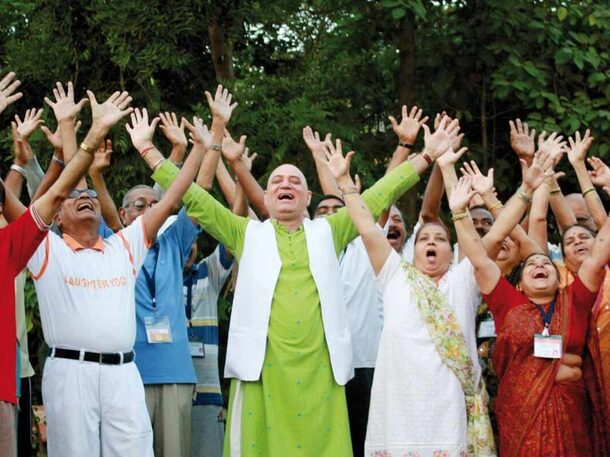




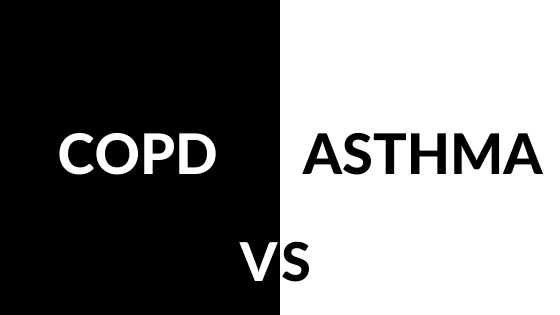
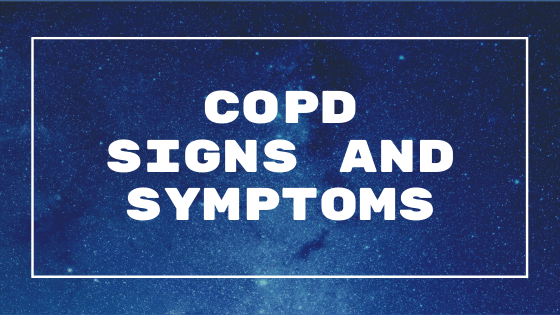
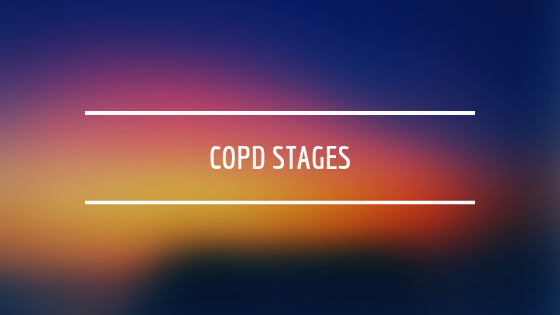
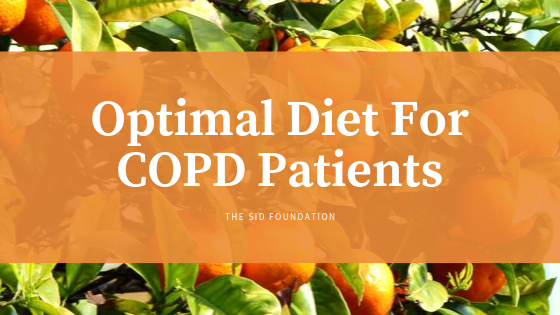
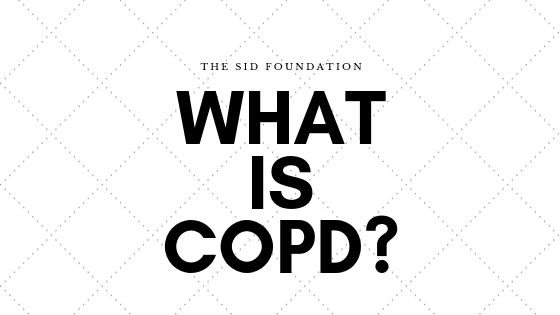
 RSS Feed
RSS Feed